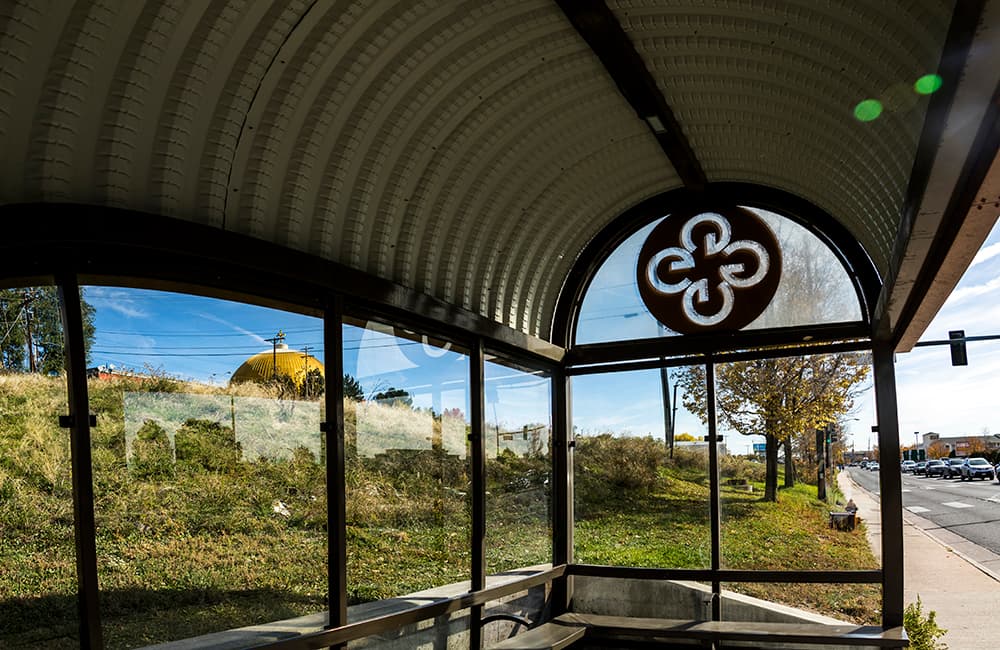
The humble bus shelter can do a lot for a route, says Kathleen Osher, executive director of the Transit Alliance.
"It's the three Ps. It's protection from the elements, it gives you a signal of priority and dignity as you wait, and then a sense of place, that you're in the right spot."
However, RTD currently has no budget to install new shelters. Plus, they usually don't own or control the land where shelters are installed. So getting shelters installed is more complicated than you'd imagine.
Heck, the bus shelter installation process doesn't always start in the same place. RTD has a customer care form where you can leave comments if you want a new bus shelter, but they also get requests from municipalities, metro districts and advocacy agencies.
One good way to be successful in those requests is if you have the funds to pay for the bus shelter installation yourself. Glendale installed four covered bus shelters with the Transit Alliance and Transportation Solutions using a grant from the now-expired New Freedom program.
But RTD doesn't always own the land where the bus shelter would be built, and that adds more complexity. That was true for Osher when she was working on the Glendale project:
"In every case, and this is not unique to Glendale, these required an easement with the private property land owner that was adjacent to the stop," she said. "That's where this gets difficult."

But even if you have the money and permission to build on the land, RTD still has to conduct its own evaluation of whether there should be a bus stop. The criteria include span of service, scheduling, physical space, safety and "others as specified."
One of those "other" criteria is that shelters go to bus stops where ridership exceeds 40 passenger boardings per day. RTD says that number is under review and may go up to 100.
Then, if the location passes the evaluation, the new shelter still has to adhere to RTD's design standards, which mandate safety and security requirements, all the way down to color, although minor deviations like Glendale's copper domes are possible.
While RTD doesn't have money to install new bus shelters, it does spend an average $3,000 per shelter per year to keep its 340 shelters in good shape, though.
This bus shelter process can go both ways: installation and removal.
RTD says there are reasons that some heavily used stops don't have bus shelters. One example is Colfax and Broadway, where shelters were "requested to be moved by Denver Police Department due to public safety concerns," according to a statement from RTD.
So cities are carrying a lot of the onus for bus shelters these days.
Osher is also the co-chair of the Denver Moves Transit Task Force, which means she's part of the team deciding how important bus shelters are to the city's vision. Bus shelters have been part of the conversation but not necessarily the most important factor in helping people use transit more.
"Probably one of the most important pieces from a city standpoint is where do we start to create that sense of place and priority," she said. "What really rose to the top were pedestrian crossings, ADA accessibility and then shelters, but high quality shelters that weren't just a bench or a sign."











